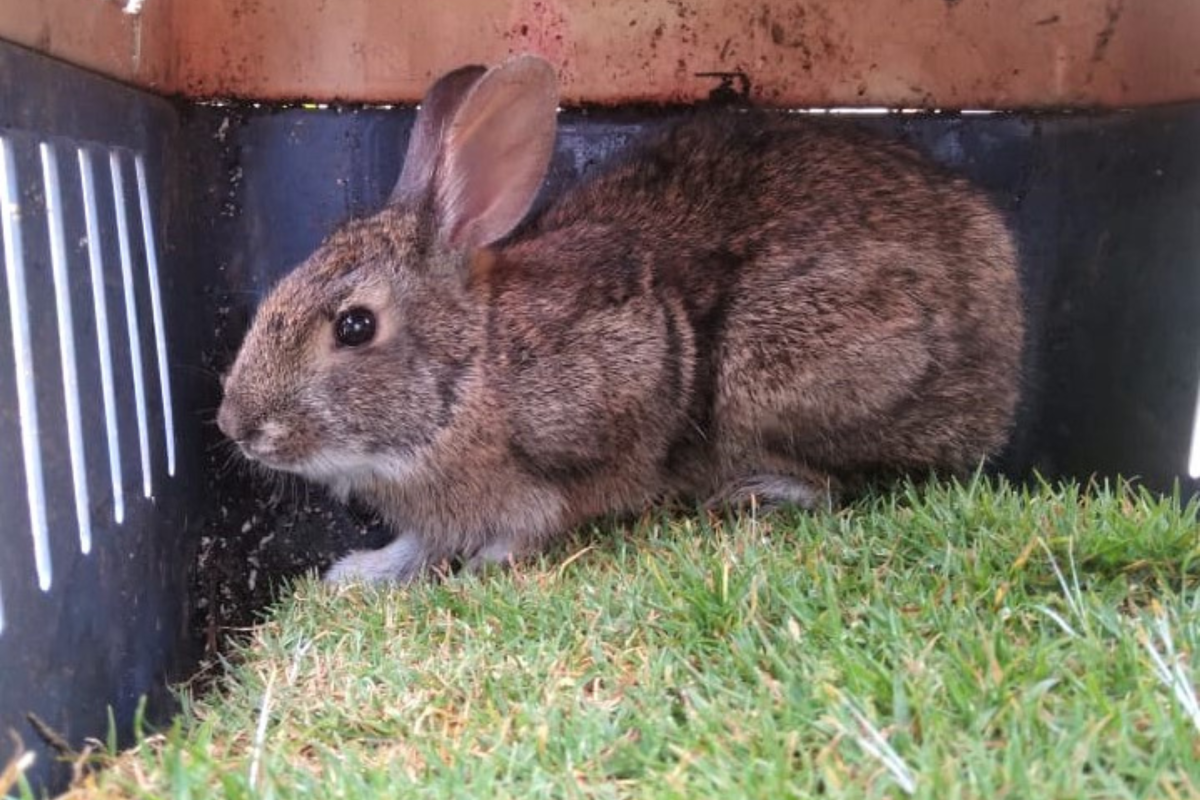The Omiltemi cottontail rabbit, a species lost to science since 1904, has been rediscovered in Mexico's Sierra Madre del Sur mountains.
The elusive rabbit was spotted by a team led by José Alberto Almazán-Catalán, president of the Instituto para el Manejo y Conservación de la Biodiversidad (INMACOB).
The rabbit was caught hopping around on camera traps, seemingly unaware that it was lost at all.

Why This Matters
The Omiltemi cottontail rabbit is a niche species found exclusively in high-altitude conifer forests, making it particularly vulnerable to habitat loss and human activity.
This find provides critical data for conservationists to understand the species' ecological role and create strategies to ensure its survival.
"Just knowing that it had been 100 years, and no other scientist had seen a live [Omiltemi] rabbit is incredible," Almazán-Catalán said in a statement. "It's totally different from the regular cottontail, and I was completely amazed and very happy to have had that opportunity to see one."
What to Know
The Omiltemi cottontail stands out by the nature of its unique features. Despite its name, it does not have the fluffy white tail typical of cottontails; instead, it sports a short, black tail. The rabbit is smaller than others in the area, with shorter ears and distinct fur color.
Almazán-Catalán's team began their search in 2019, initially focusing on areas where the rabbit was first documented by naturalist Edward William Nelson in 1904. Although the forests near Chilpancingo yielded no results, the team shifted to more remote high-elevation areas.
With the help of local hunters, interviews and camera traps, they confirmed sightings in seven out of ten targeted locations.
Despite scientists losing track of the rabbit for over a century, locals were keenly aware of its existence, and some communities even relied on the species as a regular food source.
The rabbit is only found in the conifer forests of the Sierra Madre del Sur in Mexico.
What People Are Saying
Almazán-Catalán said in the statement: "We still need to learn more about the natural history of this species; especially information about what it does between January and June, which is its reproductive season and when the greatest numbers of the species have been recorded."
Christina Biggs, lost species officer for Re:wild, added in the statement: "This search was full of unexpected turns and employed everything from interviews to drones to find this little rabbit. We applaud these tenacious and comprehensive efforts as they provide crucial updates for our partner IUCN Red List assessors to better make recommendations for species survival.
"Alberto and his team are helping fill a huge knowledge gap to make sure that the Omiltemi cottontail rabbit is never lost to science again."

What Happens Next
The expedition team has achieved 80 percent of their objectives but acknowledges there is much more to learn.
Researchers aim to study the rabbit's reproductive behavior, population size and ecological role. Conservation measures will require collaboration with local residents, authorities and environmental organizations like the National Commission of Natural Protected Areas (CONANP).
Currently, the Sierra Tecuani Biosphere Reserve overlaps the rabbit's habitat, but there are no specific protections for the species. Efforts are underway to design conservation strategies to ensure the survival of the Omiltemi cottontail rabbit for future generations.
Do you have a tip on a science story that Newsweek should be covering? Do you have a question about conservation? Let us know via science@newsweek.com.




















 English (US) ·
English (US) ·